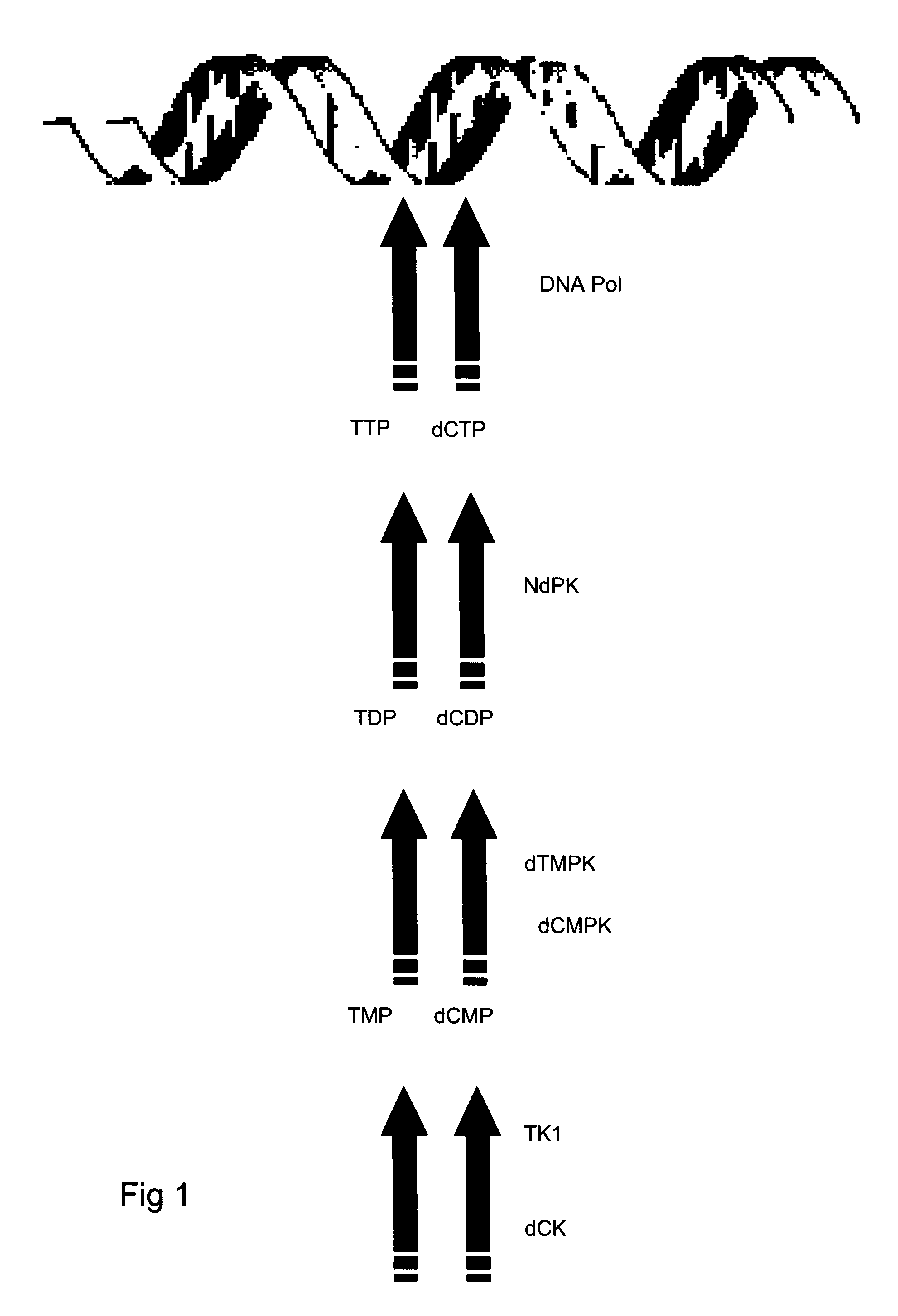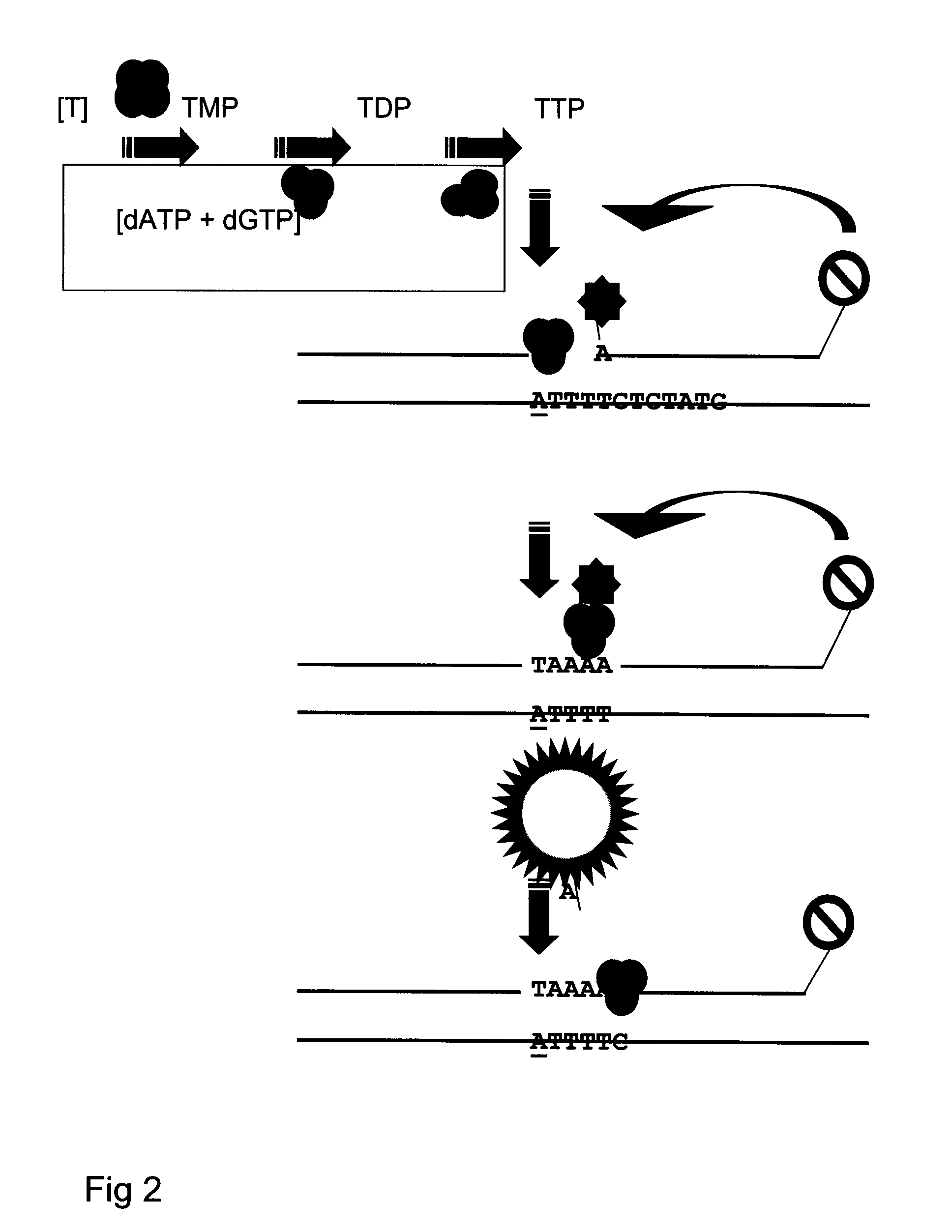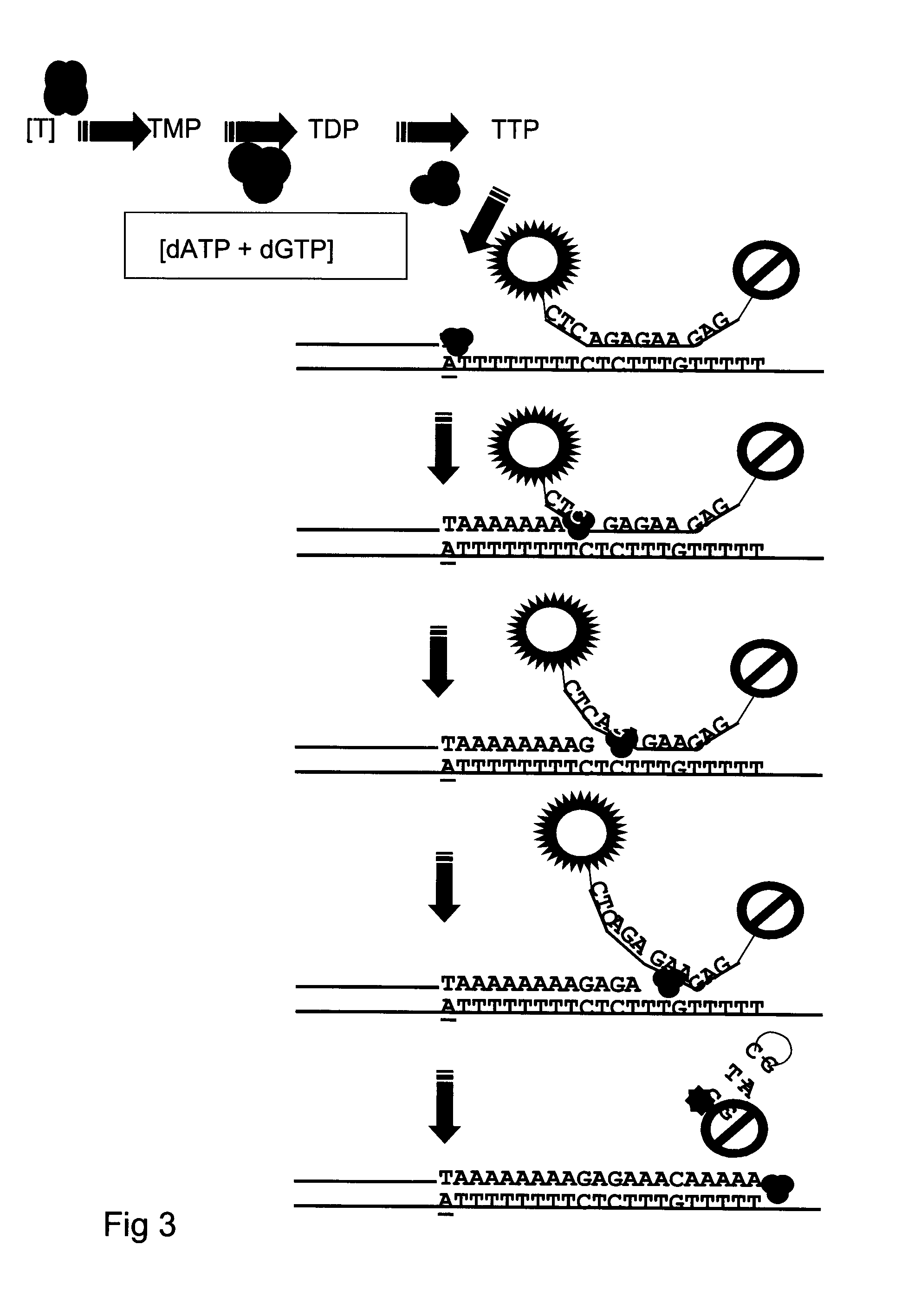Kit and method
a technology applied in the field of kit and method, can solve the problems that the use of dck as a diagnostic tool for cancer disease management has not yet found clinical application, and achieve the effect of robust performance and safe clinical us
- Summary
- Abstract
- Description
- Claims
- Application Information
AI Technical Summary
Benefits of technology
Problems solved by technology
Method used
Image
Examples
example 1
[0135]hrTK1 Standard Curve According to Detection System 1.
[0136]A standard curve was constructed representing hrTK1catalytic activity values from 200 pg, 20 pg and 2 pg of hrTK1. A 0 pg standard point was included as a hrTK1 negative control and for determination of the threshold level of normalised fluorescence. Specific activity of the hrTK1 was 2.1 μmol min−1 mg−1. Each standard point was run in triplicates. hrTK1 was diluted in TK dilution buffer, Table 2.
TABLE 2TK dilution buffer.ReagensFinal koncentrationTris-HCLpH 7.65.00E−02MBSA0.50%Triton X-100 0.1%DTT5.00E−03M
[0137]Briefly, enzyme mixes were prepared to contain each standard point of hrTK1 together with: NdPK from yeast diluted 500× giving a final catalytic concentration of 0.01 Unit per reaction and TMPK, diluted 50× equal to 36 ng per reaction. Specific activity for the yeast NdPK and recombinant TMPK is estimated to 5.4 and 3 μmol / min / mg respectively. Buffer-, substrate- and oligonucleotide mixes were prepared accordin...
example 2
[0141]dCK Standard Curve from hrdCK According to Detection System 1.
[0142]A standard curve was constructed representing hrdCK catalytic activity values from 20000 pg; 2000 pg, 200 pg, 20 pg and 2 pg of enzyme. A 0 pg standard point was included as a hrdCK negative control and for determination of threshold level for normalised fluorescence. Briefly, enzyme mixes were prepared to contain each standard point of hrTK1; NdPK as in Example 1 and dCMPK diluted 50×, equal to 48 ng of enzyme per reaction (Table 4). Specific activity of recombinant dCMPK is estimated to 35 μmol / min / mg. A 3.2*25 μl MMX was prepared for each standard point at room temperature in a 1.5 ml polypropylene micro centrifuge (including the 0 pg hrdCK negative control) by mixing buffer-, substrate-and oligonucleotide mix's together with 0.8 U of Klenow exo− fragment DNA polymerase. MMX preparation was the same as for Example 1 except that dCTP is replaced by TTP in the MMX. Oligonucleotide mix is according to Table 4....
example 3
[0147]hrTK1 Standard Curve According to Detection System 2.
[0148]A standard curve was constructed representing catalytic activity values from, 200 pg, 20 pg and 2 pg of hrTK1. A 0 pg standard point was included as a negative control. Briefly, enzyme mixes were prepared to contain the hrTK1 standard point; NdPK and TMPK as for Example 1. MMX's were prepared as for Example 1 except that 0.4 U of Taq DNA polymerase replaces the Klenow DNA polymerase and that oligonucleotides were according to Table 5. Finally, respective standard point enzyme mix was added to the each dedicated MMX. The 200 pg enzyme mix of was included in the NTC. From each standard point mix 25 μl was dispensed into three PCR tubes. Tubes were capped and placed into the PCR instrument. Cycling profile was: (1) Hold at 42° C. for 1 min, (2) Hold at 35° C. for 1 min, (3) Cycling: 37° C. for 30 s→37° C. 30 s with signal acquisition to the SYBR GreenI® / FAM channel (excitation at 470 nm detection at 510 nm). Each 1 min cy...
PUM
| Property | Measurement | Unit |
|---|---|---|
| optimal temperature | aaaaa | aaaaa |
| temperature | aaaaa | aaaaa |
| temperature | aaaaa | aaaaa |
Abstract
Description
Claims
Application Information
 Login to View More
Login to View More - R&D
- Intellectual Property
- Life Sciences
- Materials
- Tech Scout
- Unparalleled Data Quality
- Higher Quality Content
- 60% Fewer Hallucinations
Browse by: Latest US Patents, China's latest patents, Technical Efficacy Thesaurus, Application Domain, Technology Topic, Popular Technical Reports.
© 2025 PatSnap. All rights reserved.Legal|Privacy policy|Modern Slavery Act Transparency Statement|Sitemap|About US| Contact US: help@patsnap.com



